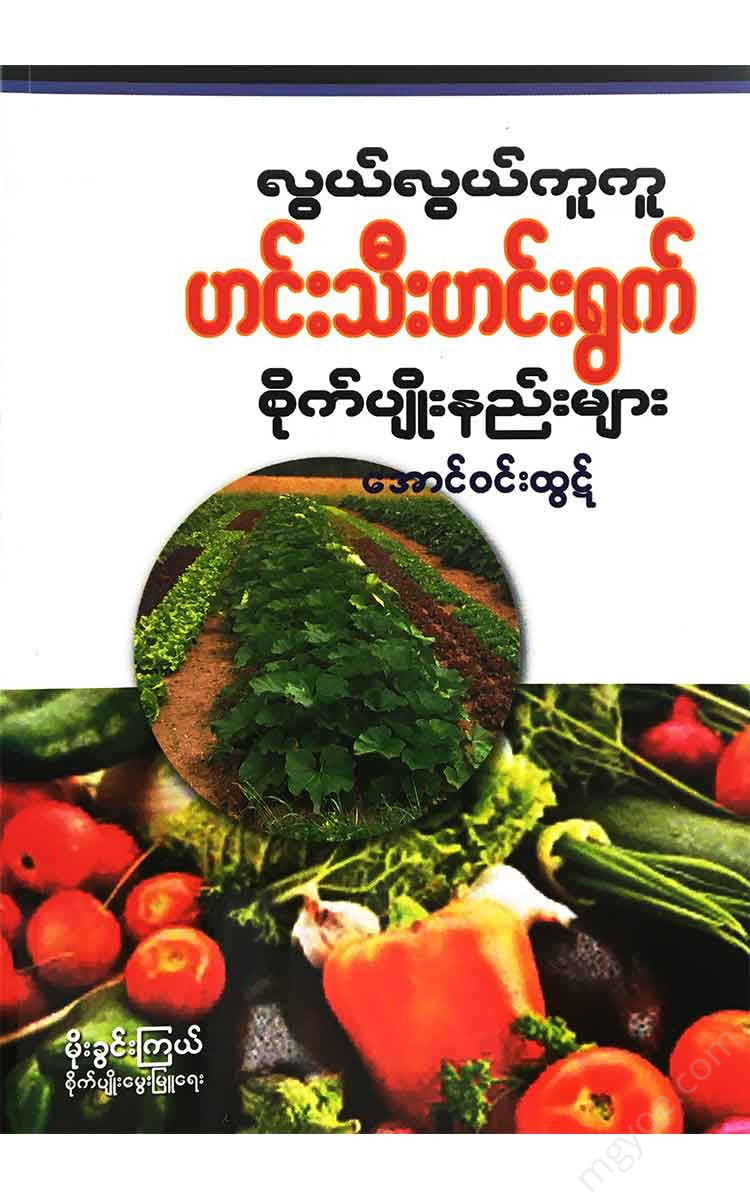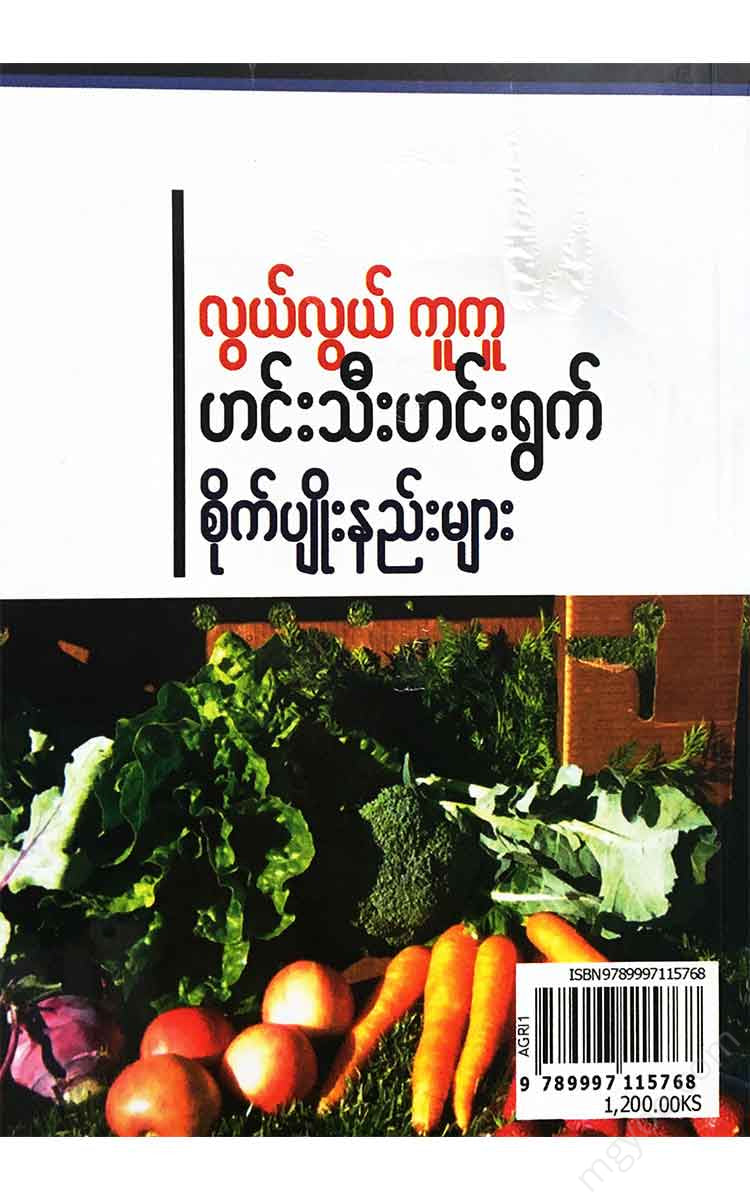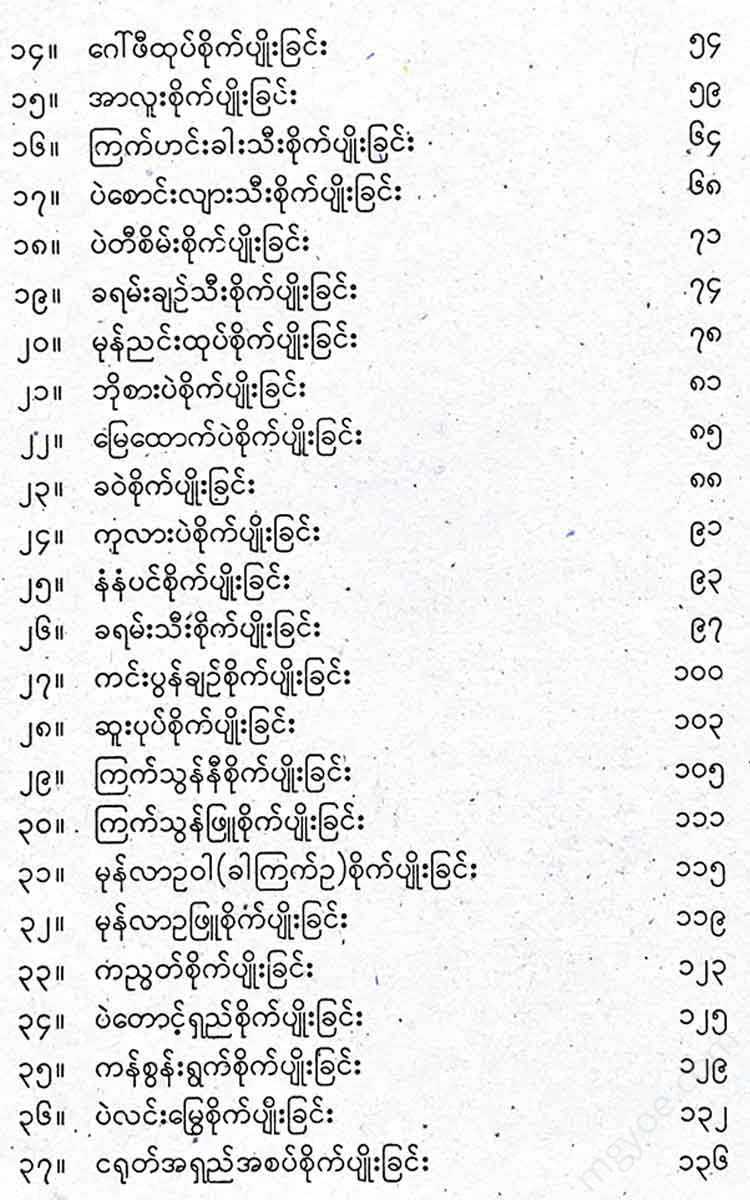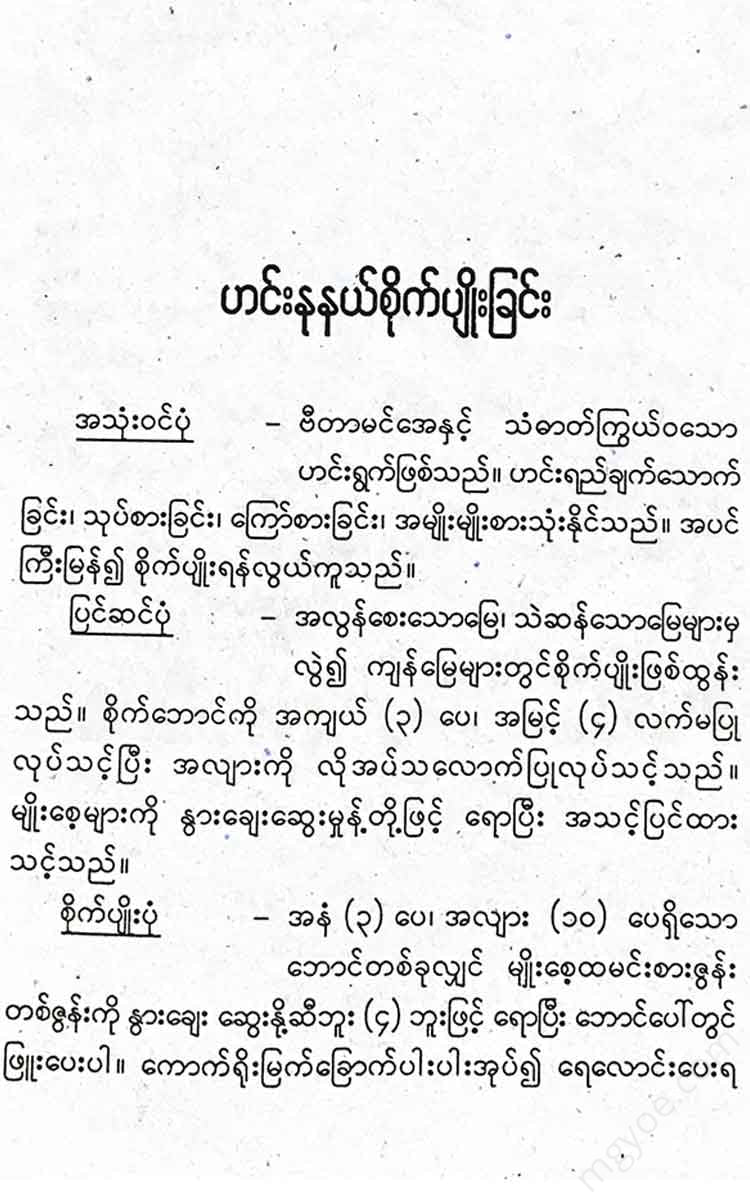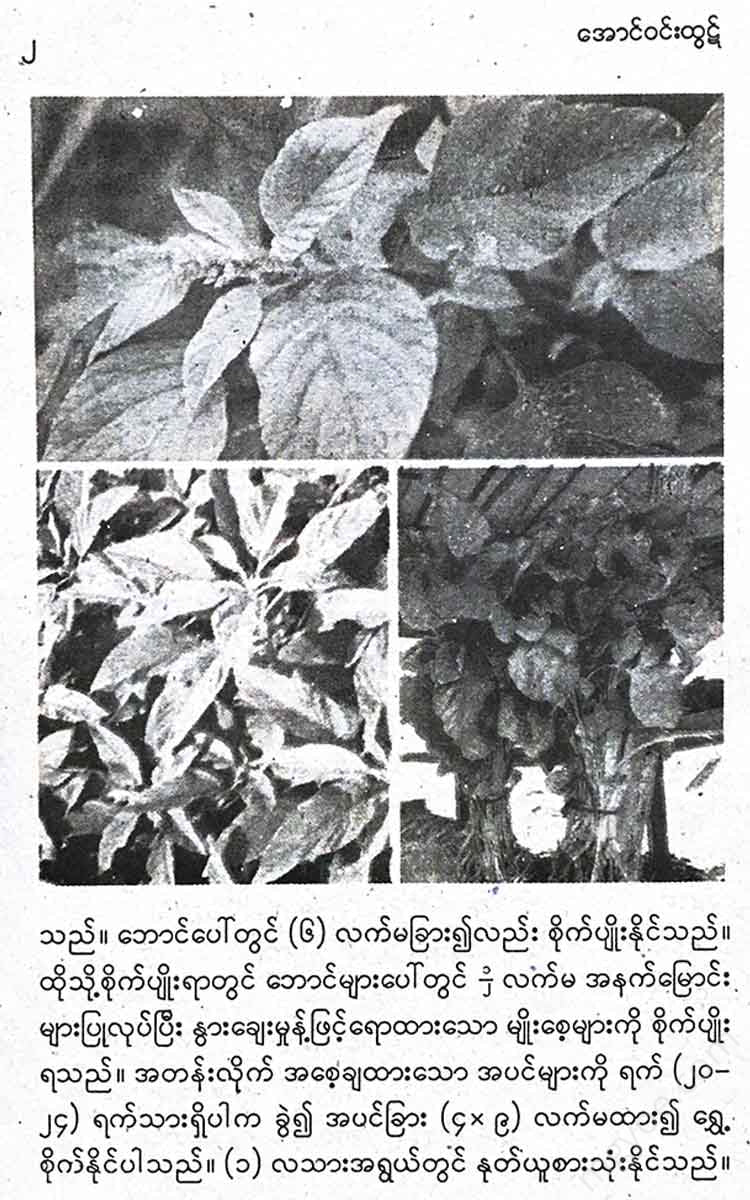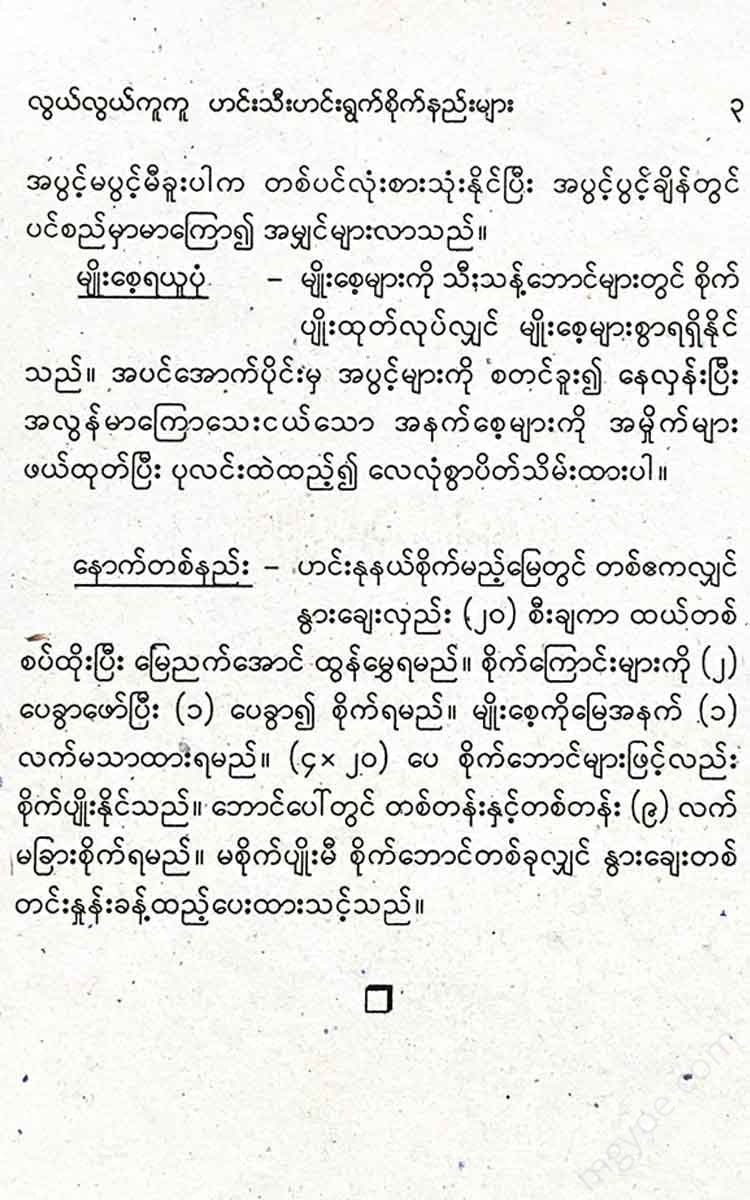စိတ်ကူးချိုချိုစာပေ
Aung Win Htut - Vegetable growing methods
Aung Win Htut - Vegetable growing methods
Couldn't load pickup availability
Cultivation of bitter gourd
Useful properties - It is a temperate perennial plant, and its shoots and fruits can be roasted and cooked in various ways.
Preparation - It is a hardy plant and can be grown in a variety of soils. There are various methods of propagation, including seedling planting, root division, and cuttings.
Planting method - When planting, the fruit should be planted in a soil slightly lower than the fruit tip, with the seeds on top, and half of the fruit should be planted. Do not water the fruit while it is growing. After the plants have sprouted, water them moderately. You can plant the fruit in a soil with a spacing of (4x4) yards (4) or (6x6) feet ( 6x6) between the rows.
Water carefully to avoid losing moisture.
How to prune - Prune the main branch to about (1) foot in length and allow (2) lateral branches to grow. When the lateral branches reach (4) to (5) feet, prune again to allow (3) lateral branches to grow from each branch. Although the plant is rarely affected by pests, it is susceptible to wilt and leaf curl diseases.
How to pick : After the fruit has set and grown rapidly, it can be picked after (15) days, or (20) days if it is not. Up to (8) fruits can be produced per branch.
How to obtain seeds : The fruits should be picked 45-50 days after flowering. The picked fruits should be placed in baskets or boxes lined with straw and kept in a cool place.
Growing beans
Useful properties - Young leaves, shoots, fruits, and stems are used in various ways. The seeds can also be pressed into oil, so choose a variety with high oil yield and seeds to press oil. Selection of varieties - If you are growing betel nut commercially, you need to choose the right variety. You should prioritize planting local varieties that are successful in arid climates and soils. Local varieties are resistant to diseases and pests. Depending on the shape of the fruit, there are various types such as betel nut, betel nut, betel nut, betel nut, betel nut, betel nut, betel nut. In Lower Myanmar, betel nut is cultivated and can be harvested 90 days after planting. Older varieties can be harvested 120 days after planting.
Planting time - (1) It can be planted all year round, but it is most commonly planted during the late rainy season (September, October). If planted during the rainy season, choose a variety with good fruit and resistance to pests. It cannot tolerate excessive frost.
Planting method - If direct seeding is used and the rainy season is the most common, then seedlings should be planted. Make holes in a plastic bag (5"x 4", 5" x 7) for good drainage and add a mixture of potting soil and compost. Add about (10) tablespoons (1000 grams) of T-Super Steel per (1) bucket of soil.
Soil preparation - Planting can be started at any time of the year. By planting in rows, the fruit is in contact with the soil, which reduces fruit rot and reduces the risk of pests. Planting should be done in a planting frame, and the frame should be dug about (3) feet wide and (1) feet high with a spade, and natural compost, cow manure (chicken manure, goat manure, sheep manure), and T-super (urea, potash) should be added and mixed evenly. If planting by seed, the topsoil of the planting frame should be sieved and soil should be added. If planting in this way, dig a hole and plant (1) seed at (1) foot intervals, leaving (3-5) feet between plants at (1) month old, and remove the remaining plants. If planting by seedlings, (2) plants should be planted in each planting hole at (5) feet intervals. In late winter, summer, and mountainous areas with low rainfall, planting holes should be made without digging the frame height, An irrigation ditch is placed between two planting ditches to allow sprouting. Sprouting beans are grown using this system.
Plant Care - Plants can be transplanted within (25) to (45) days of planting. In direct seeding system, water more carefully before the plants emerge. (1) week after planting, at the time of rooting, fertilize with urea and potash mixed together, leaving a distance of (6) inches from the plant. Care should be taken to ensure that the plants are not watered continuously while they are young. The most water-requiring period is during the fruit set and fruit set period. When the plants have (7) or more leaves, pinch the top.
Pests - Small caterpillars can attack the plants even when they are young, and should be sprayed with insecticides. Sucking insects such as aphids and members of the aphid family can attack. Leaf spot, resinous leaf spot, and leaf loss diseases can attack, and should be sprayed with fungicides even when the plants are young.
Seed extraction method - Pick a disease-free, ripe fruit and keep it in the shade for (2) weeks. Remove the inner part containing the seeds and gently rub it with a sieve until smooth. Wash it with water and dry it in the sun for (45) minutes. Air dry it in the shade for (2) days. Stir it with clean hands while drying.
